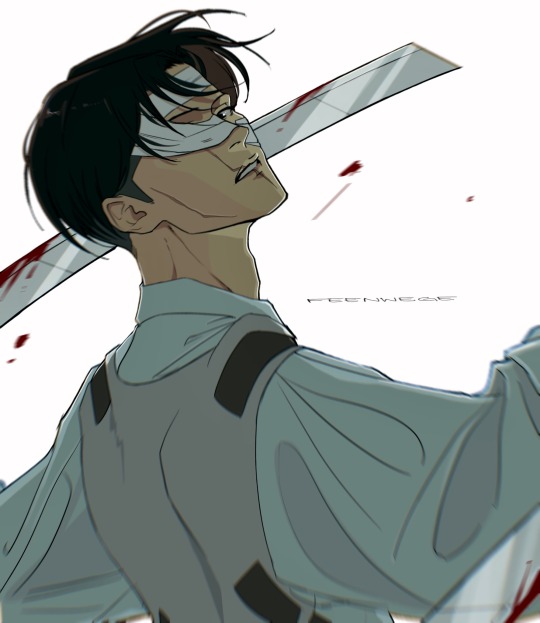I post weeby translations for practice and ramble about anime/manga. Master procrastinator. EN/ZH/JA
Don't wanna be here? Send us removal request.
Text

Episode 16 eyecatch: Resurrección
Resurrección (lit. sword release), also known as returning blade.
Arrancars use their zanpakutō to seal their "original Hollow abilities" in the form of a sword. Resurrección allows them to return to their "true form" and wield their "true powers".
Resurrección is said to consist of a second stage, but details remain unclear.
Considering the act of containing a soul's powers in a sword, which can be released to acquire substantial powers, the Resurrección is often equated with Bankai. Despite being similar in nature, the fact that the Quincies did not attempt to steal the Arrancars' Resurrección served as a hint for Urahara Kisuke in his development of the Shin'eiyaku.
4 notes
·
View notes
Text

Here we see the two extremes of anime height proportions - the ikemen and the obaachan.
#atarashii jōshi wa do tennen#shirosaki and momose kyojin?#i want to subscribe to obaachan's youtube channel plz
0 notes
Text
So stoked to see Kubo touched on the relationship between Senjumaru, Mayuri (and Kisuke by extension) in Klub Outside's Q&A (#548) this week. Appreciate the fan for asking the question!
Kubo mentioned that the unofficial group is closer to a "maker's group" rather than a focus on technology like SRDI. It makes sense how Senjumaru fits in as the leader of this unofficial group; Senjumaru, Mayuri, and Kisuke are essentially tinkerers. Modern-day Senjumaru is definitely that cool DIY sewing influencer who shares free dressmaking patterns lol.
Random musings about Senjumaru's bankai
Karagara
The most obvious association will be the onomatopoeic reference to the sound a loom makes. This is supported by Senjumaru going "ton ton kara kara ton karara". A largely similar onomatopoeia also appears in the classic Japanese folklore, Tsuru no Ongaeshi.
The kanji for kara is obviously a Hindu reference, but I won't go too much into it since I'm not familiar with Hinduism or Sanskrit. Judging by the wiki page, it seems obvious that Senjumaru is inspired by Kala. God of death, shinigami... Tomato, tomato. Considering how Senjumaru's bankai seems to foretell the end of each Schutzstaffel, Kala as "time personified" is also something to ponder about.
The sound "karagara" reminded me of Mayuri's poem in episode 22 - nanben mitemo, inochi karagara. Kubo used a different kanji for kara here ("empty").
But the great hoasissimo took one step further to this "kara" connection, pointing out the title of Chapter 666 - Kisuke's fight:
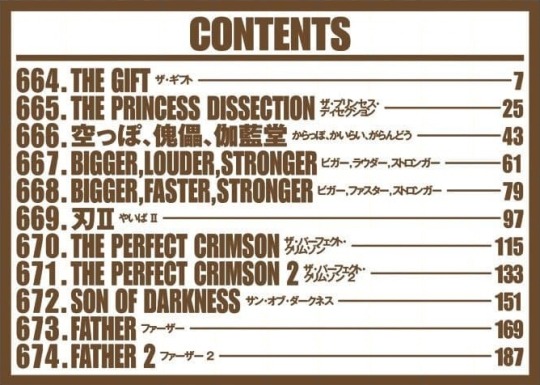
"Karappo, kairai, garandou"
I really like the connotations of associating Senjumaru, Mayuri, and Kisuke. We already saw hints that Senjumaru and Mayuri knew each other. Who knows if Kubo will ever reveal more.
Shigarami
After the last episode aired, @shiroukage pointed out that Senjumaru said this in her extended fight with Gerard:
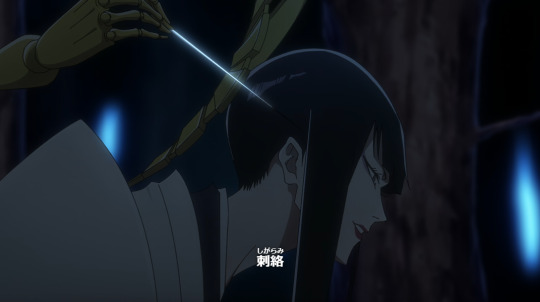
I don't know how I missed this out the first time! It does seem likely that her shikai name is Shigarami.
I found the choice of "shigarami" and its assigned kanji rather interesting. The kanji can be read as shigarami, with "shi" (lit. needle) an obvious connection to Senjumaru's title as the Great Weave Guard.
However, the kanji itself is pronounced as shiraku or bloodletting. But it's not simply bloodletting, which will be referred to as shaketsu. Shiraku has its roots in traditional Chinese medicine (that has been adapted and modified in Japan). Instead of focusing on how much blood is let out, the focus is to prick the appropriate points - usually based on the meridians - to achieve specific results with minimal blood loss.
Considering how Kubo based the position of the shinigami's saketsu and hakusui on acupuncture points (refer to Q422 in Klub Outside), I'm inclined to believe he does know of this traditional Chinese medicine practice.
Moreover, we usually understand this reading (with a different kanji of course) as (1) weir or (2) any obligations holding us back or shackles tying us down from doing something. Or worldly attachments, if we want to lean into the Buddhist context.
Weaving but also?
If you pay attention to what Senjumaru says, she starts each line with "___kase" (the blank being the number in order). The kase used in this instance (if the closed captions are accurate) is a specific kanji that is a unit "hank" for coiling threads.
Now, another common understanding of this reading kase (with a different kanji of course) is shackles. You see it? I wouldn't be surprised if Kubo has knowingly paired shigarami and kase while moving away from the common meanings yet still sticking closely to the weaving theme. Beautiful.
One more weaving reference is from "tsuji". We typically think of it as crossroads or junctions, but when it comes to traditional Japanese clothing, tsuji refers to the stitching that comes to form the 十 character.
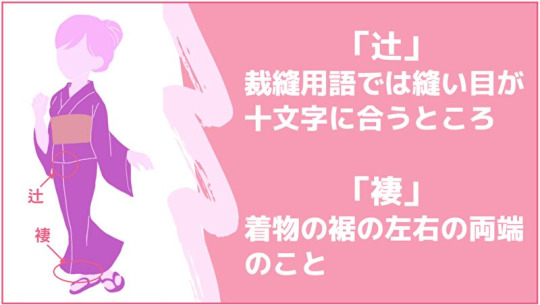
The first circled part refers to tsuji. Source: https://mamalrescha.com/trivia/tsujitsuma/
That's all! /ends abruptly
15 notes
·
View notes
Text
Wanna sing along with Takaba and Kenjaku as they play rock paper scissors in chapter 242?
youtube
The best thing from this chapter is knowing that this song comes under the purview of JASRAC and Shueisha had to apply for permission to quote the lyrics.
Jaka jaka jan! Jaka jaka jan! Jaka jaka jaka jan! Yay! Jaka jaka jan! Jaka jaka jan! Jaka jaka jaka jaka jankenpon!
4 notes
·
View notes
Text
Every Japanese comedy reference in Jujutsu Kaisen chapters 240 and 241
EDIT: Added one more reference to Audrey that I completely missed out when I was writing this post. Putting my self-proclaimed Japanese comedy otaku title to shame!
I was a Japanese comedy otaku way before I got into manga and anime, which is why I get way too excited whenever I spot Japanese comedy references in other forms of media. Granted, the plot is totally coherent even without knowing the references, but please indulge me as I find myself a rare opportunity to talk about Japanese comedians. All English panels are sourced from Manga Plus and Japanese panels are my own digital copies.
Preface about Japanese comedians
Japanese comedians usually form duos called "combi" in Japanese. Some may form trios or even quartets, but duos make up the overwhelming majority. Solo comedians are becoming more common, but like Takaba, most if not all of them had started out as a duo that didn't work out over time.



Nabe Nabe Entertainment and Pony
Reference to Watanabe Entertainment, a major entertainment agency in Japan. The most famous comedian group under Watanabe's management will be the comedic trio Neptune, and the above panels reference them indirectly as well.
Another talent management agency mentioned is Pony, which is a reference to Sony Music Artists Inc (SMA). Yes, they manage comedians as well lol. Agencies have distinct styles of management, which eventually shows in the type of comedians they manage. Kenjaku assumes that Takaba is with Pony because SMA has managed to propel an impressive number of solo comedians to fame despite the comparatively smaller scale of management. They also lean more slapstick than the "cooler" forms like skits and monologues. In fact, Takaba reminds me of Koume Dayū:
youtube
Laughing Dog? Vocabula?
Both Laughing Dog (Warau Inu) and Vocabula (Vocabula Tengoku) were incredibly popular variety TV serial programmes that Neptune appeared in during the 1990s and early 2000s. Takaba admires Neptune, which is why he chooses to sign with Nabe Nabe rather than Pony, even if the latter may actually manage him better.
Kenjaku wondered for a second why Takaba didn't cite Vocabula as the reason he admires Neptune, because Vocabula was the one that gave Neptune their shot to fame, and they absolutely reached superstar levels of fame during the time. Laughing Dog came later, when they were already established as household names.
The reason why Kenjaku walked back on it with "I guess that's obvious enough" has to do with the nature of the two programmes. Laughing Dog was a sketch comedy programme like Chappelle's Show, while as the name may suggest, Vocabula focused on wordplays, puns, and parodies. Comedians were voted based on how they performed the jokes. Here's a short clip of Neptune on Vocabula:
youtube
While here's a sketch from Laughing Dog (the second, third, and fourth green leaves members are Neptune lol):
youtube
Of course Takaba was inspired by Laughing Dog, "I guess that's obvious enough".
Backbone! My backbone!
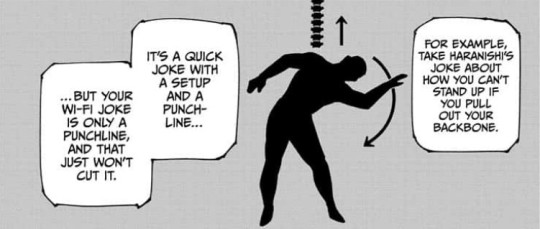
An actual short gag (ippatsu gag or lit. one-shot gag) by Haranishi from the duo FUJIWARA:
youtube
It's not the first time Akutami has referenced an actual short gag in the series. Perhaps you may remember Itadori's unfortunate reunion scene at the sister school goodwill event:

This is a gag from Kojima Yoshio:
youtube
You have my condolences, Itadori.
Comedians and auditions

Kenjaku is dressed like a stereotypical TV producer here. This dates back to Japan's asset price bubble; during which, tying a cardigan over the shoulders was a staple look among TV producers and directors. In this scene, Takaba is auditioning like he would for a part in a variety TV show. Struggling comedians like Takaba often audition for variety shows that showcase a series of comedic skits or manzai. Pass the audition and you get a spot to perform on national TV.
Comedians and theatre

Most comedians who don't get their big breaks on TV spend a large part of their careers in small theatres. A typical comedy show consists of several groups of comedians performing their skits or manzai, and the theatre will hand out feedback forms like the above. It seems like Takaba used to go by the stage name Pinchan.
P-1? C-1?
The fictional C-1 is a reference to an actual long-running competition M-1 Grand Prix, while the fictional P-1 which Takaba mentioned earlier is a reference to another competition R-1 Grand Prix. M-1 is restricted to manzai performed by two people or more, while R-1 is open to solo comedians only. There are several important annual comedy competitions in Japan. Winning these big-name competitions is usually the ticket to fame for many comedians, but even then it may not work out for everyone.
Idol shows
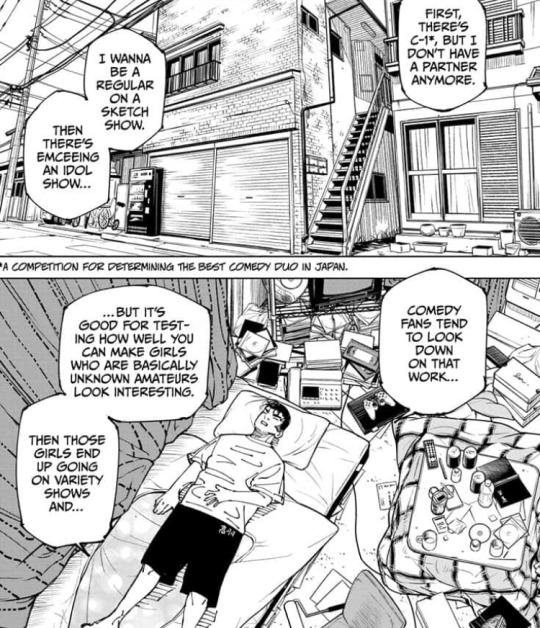
It has become customary to have established Japanese comedians host Japanese girl groups TV shows, and I pretty much agree with Takaba's take on why. If you're a fan of idol groups like Morning Musume, AKB48, Nogizaka46, or Idoling!!!, then you would be familiar with Japanese comedians like Ninety-Nine, Ariyoshi Hiroiki, Bananaman, and Bakarhythm.
By the way, Takaba was watching TV while eating cup noodles after the above panel. The lines are from a well-known manzai performed by comedy duo Audrey. This particular joke with them going "hehehe" at each other is a staple in their early manzai:
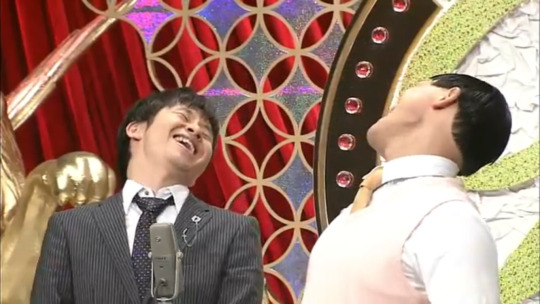
In fact, take a closer look at the apartment that Takaba lives in. It's based on the actual apartment Kasuga (pink vest guy on the right) used to live in, named Mutsumi-sō. His shabby apartment and extremely thrifty lifestyle had been featured in many variety TV shows in the past. He lived there for more than 20 years, and the apartment was actually quite a tourist spot for fans of Audrey. Kasuga's Japanese Wikipedia article even has a photo of it as seen below, which is what I think Akutami referenced from. The interior is largely based on Kasuga's apartment as well:

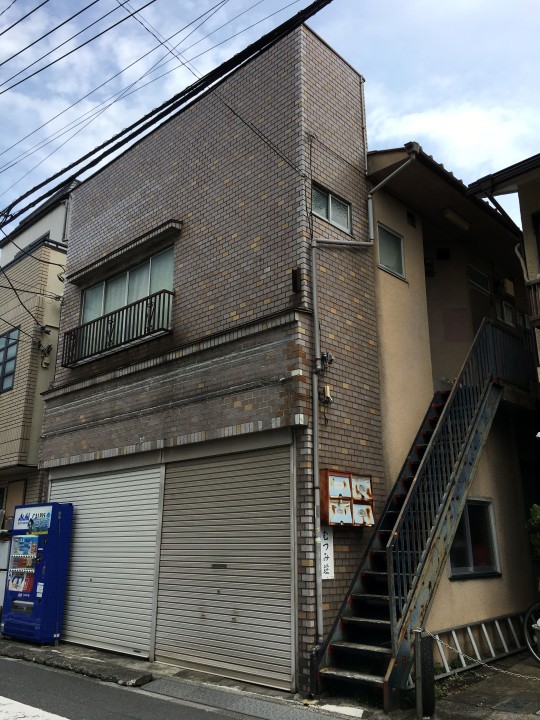
Bonus Japanese comedy!
Akutami has taken inspiration from actual Japanese comedians in the past. In chapter 153, two of the spectators look eerily like comedy duo Sandwichman:

And how can we forget Ken, the fellow comedian who gave Takaba advice in chapter 146:
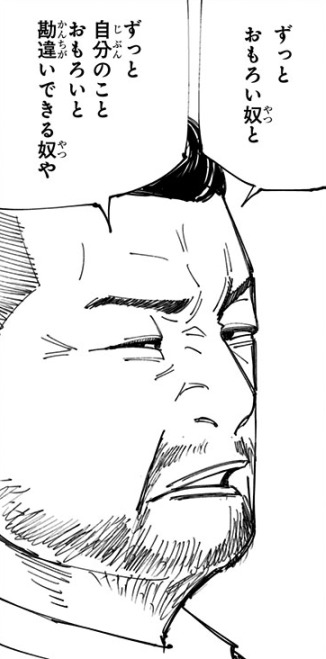
He's based on Kendo Kobayashi, and if you've seen images/clips of Akutami dressed up as Mechamaru, that was when he went on Kenkoba's show:
youtube
Wow that was long. Thanks for indulging the squealing Japanese comedy fan in me!
122 notes
·
View notes
Text
BLEACH x Nissin (China) Collab CM
Last week on Deskside, Kubo mentioned how hilarious this Nissin China collab CM was, so I went to dig for it. He's right; it's so silly and fun! This is for the China-exclusive Hé Wèi Dào (transliterated as Aimido in Japanese) cup noodles series. I can't help but giggle when I imagine the voice actors recording these "extra lines" after the actual episode recording. Hope you'll enjoy the subtitles I quickly whipped up!
#superfurytranslations#bleach#thousand-year blood war#abarai renji#äs nödt#bambietta basterbine#bazz-b#hirako shinji#hitsugaya tōshirō#ishida uryū#jugram haschwalth#kuchiki rukia#kurosaki ichigo#kurotsuchi mayuri#kyōraku shunsui#quilge opie#urahara kisuke#yhwach
49 notes
·
View notes
Text

Episode 16 eyecatch: Shin'eiyaku
A wonder drug developed by Urahara Kisuke to "prevent the stealing of Bankai". Meant to be absorbed upon contact, the pill reacts only to Soul Reapers who have attained Bankai.
Once absorbed, the pill contains a miniscule amount of Hollow powers that permeates within the soul to cause momentary Hollowfication of the Soul Reaper's Bankai.
Quincies lack Hollow antibodies; everything about Hollows is deadly to them. This applies to Hollowfied Bankai as well. In order to stay alive, Quincies will have no choice but to expel the stolen Bankai out of their bodies.
Should Soul Reapers choose to release their Bankai right after reposessing the stolen Bankai, Hollow-like masks may form upon release as a side effect.
5 notes
·
View notes
Note
I just want to say your translations are SUPER helpful and thank you for posting them
I was always wondering what I was missing between the title cards. Turns out, a lot ! I appreciate you very much 🙏
Wow, thank you! That's incredibly kind of you. I started off just wanting to practise, but it's so nice to know that someone likes it. I appreciate you too! I am a chronic procrastinator, but I'll try to finish the keywords (and some interviews) before the next cour hahahahahaha.
1 note
·
View note
Text
Random musings about Senjumaru's bankai
Karagara
The most obvious association will be the onomatopoeic reference to the sound a loom makes. This is supported by Senjumaru going "ton ton kara kara ton karara". A largely similar onomatopoeia also appears in the classic Japanese folklore, Tsuru no Ongaeshi.
The kanji for kara is obviously a Hindu reference, but I won't go too much into it since I'm not familiar with Hinduism or Sanskrit. Judging by the wiki page, it seems obvious that Senjumaru is inspired by Kala. God of death, shinigami... Tomato, tomato. Considering how Senjumaru's bankai seems to foretell the end of each Schutzstaffel, Kala as "time personified" is also something to ponder about.
The sound "karagara" reminded me of Mayuri's poem in episode 22 - nanben mitemo, inochi karagara. Kubo used a different kanji for kara here ("empty").
But the great hoasissimo took one step further to this "kara" connection, pointing out the title of Chapter 666 - Kisuke's fight:

"Karappo, kairai, garandou"
I really like the connotations of associating Senjumaru, Mayuri, and Kisuke. We already saw hints that Senjumaru and Mayuri knew each other. Who knows if Kubo will ever reveal more.
Shigarami
After the last episode aired, @shiroukage pointed out that Senjumaru said this in her extended fight with Gerard:

I don't know how I missed this out the first time! It does seem likely that her shikai name is Shigarami.
I found the choice of "shigarami" and its assigned kanji rather interesting. The kanji can be read as shigarami, with "shi" (lit. needle) an obvious connection to Senjumaru's title as the Great Weave Guard.
However, the kanji itself is pronounced as shiraku or bloodletting. But it's not simply bloodletting, which will be referred to as shaketsu. Shiraku has its roots in traditional Chinese medicine (that has been adapted and modified in Japan). Instead of focusing on how much blood is let out, the focus is to prick the appropriate points - usually based on the meridians - to achieve specific results with minimal blood loss.
Considering how Kubo based the position of the shinigami's saketsu and hakusui on acupuncture points (refer to Q422 in Klub Outside), I'm inclined to believe he does know of this traditional Chinese medicine practice.
Moreover, we usually understand this reading (with a different kanji of course) as (1) weir or (2) any obligations holding us back or shackles tying us down from doing something. Or worldly attachments, if we want to lean into the Buddhist context.
Weaving but also?
If you pay attention to what Senjumaru says, she starts each line with "___kase" (the blank being the number in order). The kase used in this instance (if the closed captions are accurate) is a specific kanji that is a unit "hank" for coiling threads.
Now, another common understanding of this reading kase (with a different kanji of course) is shackles. You see it? I wouldn't be surprised if Kubo has knowingly paired shigarami and kase while moving away from the common meanings yet still sticking closely to the weaving theme. Beautiful.
One more weaving reference is from "tsuji". We typically think of it as crossroads or junctions, but when it comes to traditional Japanese clothing, tsuji refers to the stitching that comes to form the 十 character.

The first circled part refers to tsuji. Source: https://mamalrescha.com/trivia/tsujitsuma/
That's all! /ends abruptly
#superfurymusings#kubo tite#bleach#thousand-year blood war#kurotsuchi mayuri#shutara senjumaru#urahara kisuke
15 notes
·
View notes
Text

Episode 15 eyecatch: Shunkō
A form of combat technique that utilises both hakuda and kidō.
Users of the technique clad themselves in highly concentrated kidō compressed around the back and shoulders. When the kidō explodes, it is channeled to the user's arms and legs for use in combat.
An intense explosion occurs when the technique is activated, which is why the Keisen attire worn by Shihōin Yoruichi and Soi Fon - both of whom practise Shunkō - does not cover the back and shoulders with fabric.
In addition, the technique may exhibit different characteristics based on the user's spiritual pressure.
2 notes
·
View notes
Text
I supervised and added new Schutzstaffel to the opening scene in this week's episode [episode 24]. They made just a short appearance this time.
Deskside 2023.09.25
And most of my work for this cour will go into next week's episode [episode 25].
Deskside 2023.09.25
1 note
·
View note
Text
I did up illustrations for Sōō Zabimaru's form and transformation motion, as well as the shadow movement for Yhwach and Haschwalth for this week's episode [episode 18]!
Deskside 2023.08.07
1 note
·
View note
Text

Episode 15 eyecatch: Wandenreich
The Quincy empire ruled by Yhwach. It succeeded the former kingdom known as Lichtreich ("Empire of Light"), the location of which is unclear.
Yhwach, emperor of the Lichtreich, led the then-Sternritter to invade Soul Society one thousand years ago. However, they found themselves on the verge of collapse following resistance from the Thirteen Court Guard Squads led by Yamamoto Genryūsai Shigekuni.
With nowhere to go, the Quincies sought refuge where the Soul Reapers were least cautious - Seireitei. They used spirit particles to create spaces in the shadows, thus the name Wandenreich ("Invisible Empire").
2 notes
·
View notes
Text
Come to think of it, I said I'd talk about what went behind the scenes of making the OP, but I forgot! After w.o.d's song was confirmed for this cour's OP, I suggested, "How about we dress them up in casual clothes?" The director responded, "Could you design the clothes then?" That was how it began. From then on, the process went as follows: 1. I received the list of characters they wanted to include in the OP; 2. I received the completed storyboard; 3. The storyboard included the general style for the characters in each scene (e.g. basketball gear, suits); 4. I designed the clothes based on the directions given. As I was designing the clothes, I kept thinking: Rap battle!? Helicopter!? Fire extinguisher!? But I'm glad the final product turned out so fun. In other words, all the ideas - Yhwach on a helicopter, everyone playing basketball, Ichigo with a double-neck guitar, plus Uryū holding the violin in the reverse position (you'd have to understand the character well enough to think of that) - came from Murata (chief episode director) and the series director!!! My only two contributions were the designs for the clothes and the font design proposal for the staff credits!
Deskside 2023.07.27
---------
Fascinating tidbit about the violin! I know nothing about the instrument, but apparently the "standard" way is to hold the violin in your left hand and the bow in your right.
As you may have known by now, left-handed bows do not exist in Japanese archery kyūdō. The only way is to hold the bow in your left hand and draw the string with your right. However, Ishida has always held his bow in his right hand while drawing the string with his left. That's what Kubo meant by "reverse position".
The directors took note of this detail with the violin. They have so much love for BLEACH!
1 note
·
View note
Text

Episode 14 eyecatch: Schrift
These are special abilities granted by Yhwach to chosen Quincies of the Sternritter. By consuming Yhwach's blood, they develop unique abilities characteristic of their temperaments. Each Schrift consists of an alphabet that matches the initial of the special ability.
Rumour has it that some Sternritters possess unique abilities despite not having granted a Schrift by Yhwach, while the Schrifts of some Sternritters such as Shaz Domino remain unknown.
1 note
·
View note
